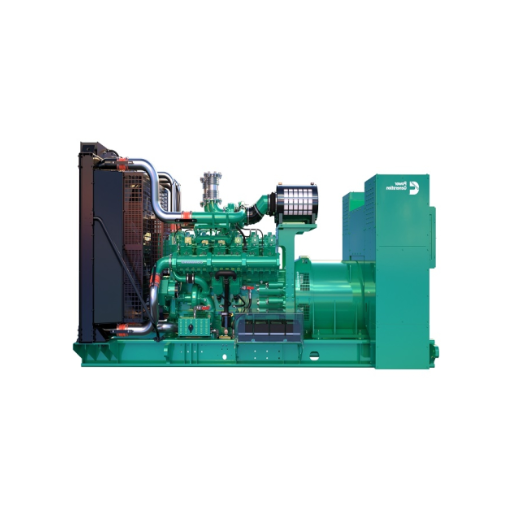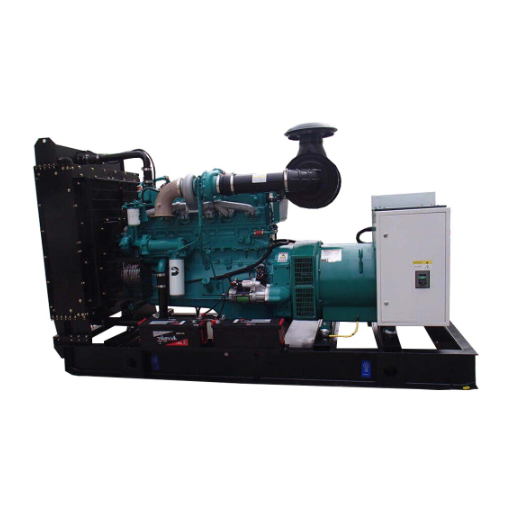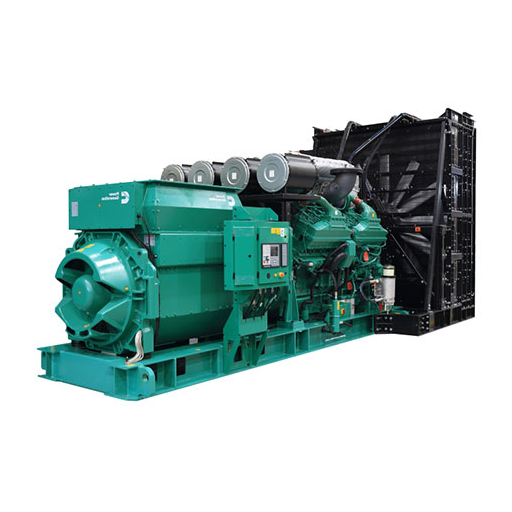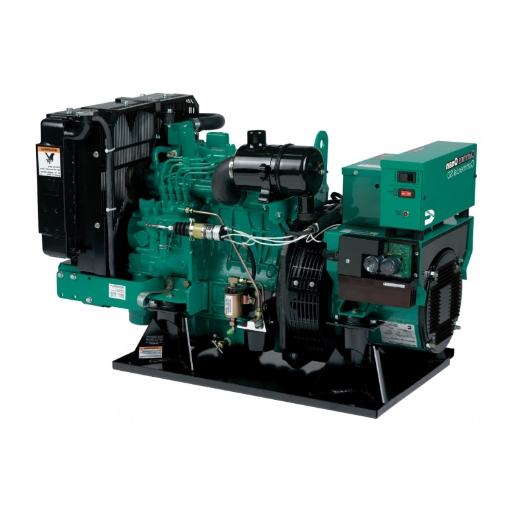When considering a generator for whole-house power, it is crucial to assess your energy needs, understand the types of generators available, and evaluate the factors that influence their performance. A whole-house generator is designed to provide sufficient power to support your home’s key appliances and systems during outages, ensuring uninterrupted functionality and comfort. However, selecting the appropriate generator size is a detailed process that involves calculating your household energy requirements, considering peak power demands, and accounting for system efficiency. This guide will provide a comprehensive framework for determining the right generator capacity for your home while offering insights into key considerations such as power output, fuel types, and backup power options tailored to various scenarios.
What are the benefits of portable power generators?

How do portable generators compare to standby generators?
Both portable and standby generators cater to different users and, hence vary in features such as design, capacity, and usage. Unlike standby generators, portable generators are smaller, manually operated devices that are more suitable for short-term outages or outdoor activities. Depending on the needs, these generators can provide an electric output of anywhere between 1,000 and 10,000 watts. Generally, they run on gasoline or propane and need to be manually fueled. Switching them on or off also requires manual intervention in the form of transfer switches.
Standby generators are permanently installed systems designed for sustained power supply. They have higher power output with the ability to provide anywhere between 7000 and 150,000 watts, depending on the model. These can also detect power outages automatically using a transfer switch. Standby units are typically powered by propane or natural gas as they provide more reliability due to consistent energy being supplied without needing manual intervention. They are also equipped with better systems for voltage regulation and extended runtimes, which makes them suitable for whole-home backup.
- Power Supply: portable generators (1,000 – 10,000 W) vs. Standby generators (7,000 – 150,000 W).
- Fuel type: portable, gasoline/propane, Standby, natural gas/liquid propane.
- Runtime: Standby generators can run for longer periods compared to portable generators, which have a runtime of 8-12 hours on one tank because portable generators do not have a direct fuel supply connected to them.
- Transfer Mechanism: With portable systems, manual operation is a necessity because they require a transfer switch while automatic transfer switches are used for standby units.
- Voltage Regulation and Surge Protection: There is a greater capability to manage sensitive electronics in standby generators as they have advanced voltage regulation and surge protection features.
Regardless, the final option comes down to sensitivity of application, budget restrictions, and energy need. In scenarios that are low in power requirement and need flexibility, portable generators can be used, whereas standby generators can be used for rugged, long-term critical power needs.
What appliances can a portable generator run?
Even though a portable generator can operate various appliances, its wattage capacity must first be calculated to avoid overloading the system.
- The Refrigerator or Freezer: Typical units range around 600-800 watts; larger models can sometimes take close to 1,200 watts to start.
- Lights: The power consumption for LED or CFL bulbs is among the lowest at 5-20 watts per bulb.
- Microwave Oven: The unit consumes around 800-1,200 watts, depending on the wattage rating of the unit.
- Television: A standard LCD television uses between 100 and 300 watts.
- Sump Pump: During operation, this may draw 600-1,000 watts, plus additional power demand during startup.
- Portable heater or fan: A heater will typically operate at 1,000-1,500 watts, a fan usually consumes 50-100 watts.
- Personal Electronics: Devices such as laptops and smartphones take very little energy to charge. Combined, they usually come in under 100 watts.
Always check the running and starting wattage for your appliances before doing anything else. Generators watts output varies from 2,000 up to 10,000. If these numbers and requirements are met the system can be operated smoothly without fear of damage to generator parts or other devices connected to it.
What are the advantages of natural gas generators?

How do natural gas generators compare to propane generators?
After thorough analysis, natural gas and propane generators each have their distinct advantages and uses. Natural gas generators have the unique feature of an attached gas line that allows for a constant fuel supply, which makes them an excellent choice for long-term operational and high-demand usage. On the contrary, propane generators depend on external propane tanks, which allow for portability but restrict the runtime of the generators depending on the tank size and accessibility.
Propane generally has a higher energy density—roughly 91,500 BTU per gallon compared to natural gas, which has approximately 1,037 BTU per cubic foot. Regardless, natural gas tends to be more cost-efficient, especially in today’s market, and its combustion is much cleaner, resulting in lesser emissions and soot in the engine. One other important point of comparison is regarding efficiency. Propane-fueled generators appear to demonstrate more favorable fuel-to-power ratios, but that may not be enough to offset the expense of propane in regions where natural gas is abundant.
When taking into consideration the performance of different generators, roughly equal amounts of power and reliability is expected when using either type of fuel, however, propane tends to shine when used during colder times as it does not gel like some natural gas systems do. Overall, the decision rests on fuel availability, maintenance needs, and the expected range of operation.
What is the lifespan of a natural gas generator?
With the right use and maintenance, a natural gas generator could last between 20 and 30 years, translating to 10,000 – 30,000 operational hours.
- Load Factor: The generator should be operated at an optimal load of 50-75% of its rated capacity. This ensures efficient performance while minimizing wear and tear.
- Maintenance Schedule: The generator’s oil, filters, and systems require regular servicing. Missing these checks may drastically decrease the operational life of the generator.
- Fuel Quality: Using high-quality natural gas leads to minimal carbon build-up and engine wear, extending the durability of the generator.
- Operating Environment: An environment that is clean, stable, and well ventilated allows the generator to avoid overheating and corrosion.
All of the above, alongside following the manufacturer’s instructions, allows for reliable maximization of the natural gas generator’s lifespan.
Are natural gas generators more environmentally friendly?
Natural gas generators are less damaging to the environment than diesel or gasoline generators. Their combustion emissions are cleaner and efficient than other fuel types.
- Lower emission of greenhouse gases: The combustion of natural gas emits approximately 117 CO2 parts per million British Thermal Unit (BTU) which is significantly lower than gasoline’s 157 and diesel’s 161 emission rates for the same amount of energy produced.
- Reduced Particulate Matter (PM): Natural gas generators emit negligible PM emissions relative to diesel-powered generators, greatly decreasing the chances of air pollution.
- NOx: Modern designs of natural gas generators achieve less than 0.03lb/million BTU emission of nitrogen oxides, which is a great improvement from less modern designs.
While it is evident that natural gas generators have better emission efficiency, it is critical to remember the potential environmental damage of methane leaks resulting from the extraction and transportation of natural gas. Dealing with leak handling in the supply chain can greatly lower the chances of methane gas pollution.
How much wattage do common household appliances require?

How much power do HVAC systems typically need?
The electrical demand of HVAC systems tends to differ widely due to the “the system’s” scale, its parts, and the grade of efficiency. In the case of the HVAC, central air, or residential systems, it’s consumption is on average from 1.5kWh/hour to 5kWh/hour. Gas heating devices, especially furnace units equipped with electric fans, use between 400 and 800 watts when working.
In other cases, ductless mini splits systems work sometimes more efficiently, because their consumption ranges from 700 to 2,000 watts. Compressors for reverse cycle split heating and cooling energy efficient units require quite a bit of power for approximately four hours, between 80-2200 watts for these units with higher seasonal energy efficiency ratio (SEER) and heating seasonal performance factor (HSPF).
Besides efficiency rating systems, other factors can cause fluctuations in wattage such as age, frequency of use, or temperature changes throughout the year. Units rated 16 SEER or higher are considerably more efficient compared to devices with lower ratings.
What’s the wattage needed for smaller electronics and lighting?
The wattage for small electronics and lighting can differ considerably by device and its use.
- LED Lighting: Uses 5-20 watts per bulb, which is more efficient and lasts longer than incandescent bulbs.
- Compact Fluorescent Lighting: Uses 10-30 watts per bulb which is higher than LEDs, but lesser than incandescent bulbs and gives off adequate light.
- Laptops: Need wats within the range of 30-120 depending with the laptop model and set task. Gaming laptops surge the expected limit.
- Smartphones and Tablets: Charge with 5-20 watts rated chargers, fast ones exceed 20 in some cases if the device allows.
- Televisions: Modern smart LED television consume 50-150 watts depending upon screen size and brightness. OLED screens might be higher due to touchscreen nature.
The required burn time for a device varies based on features and rating, so it is best to analyze the technical specifics that come with it. Different devices have varying patterns in how much energy is burned.
What safety precautions should I take when using a generator?

How can I prevent carbon monoxide poisoning when operating a generator?
Following the safety procedures outlined below will ensure that carbon monoxide poisoning risks are eliminated while using a generator.
- Always Keep Indoors: Generators should be used in a free outdoor space that is at least 20 feet away from doors, windows and buildings. Closed areas can quickly become filled with carbon monoxide which is an odorless and lethal gas.
- Always Use Detectors: Make sure that carbon diode detectors are battery-powered or have a secondary battery source. Detectors should be in good working condition and positioned next to sleeping quarters.
- Generatos Should Not Be Placed In Enclosures: Generators should never be placed inside houses, garages, crawl spaces or any space that is partially closed, doors included. Carbon diode detectors can kill in less than a minute so generators should always be used outdoors.
Following the procedures provided above and remaining technically competent should ensure that risks due to carbon exposure are greatly reduced.
What’s the proper way to connect a generator to my home’s electrical system?
- Put in a Transfer Switch: A transfer switch is one of the two backfeed preventing devices which can pose a danger for utility workers or cause severe damage to electrical systems. This switch connects the generator to the homes circuit panel and lets me change between utility power and generator power without any hassle.
- Estimate Generator Capacity: For example, a refrigerator can use about 600 to 800 watts while a central heating system can use anywhere between 1,500 and 3,000 watts. These numbers can vary a lot, so I must figure out the combined wattage of appliances and systems I need to power before buying a generator.
- Employ Suitable Power Cords: In addition, extension cords should be heavy-weight, suitable for outdoor use, and have the right power rating to handle the needed wattage. The required amperage (15A, 20A), depending on the attached devices, should also be met.
- Link the Generator to the Transfer Switch by the Power Inlet Box: For these purposes, it is best to use a power inlet box along with the compatible generator cord. This will securely and safely connect the generator to the transfer switch socket.
- Obey local standards and rules: I have to follow the local codes when setting up the electric transfer switch and the accompanying wiring. Preferably, a licensed electrician should assist me to ensure that all mandated criteria are satisfied.
Operations are accurately performed within the safety, the setup of the generator and its connections are compliant, and the equipment life-cycle and safety boundaries are not breached, empowering my home to use electrical power when there is an outage.
How often should I maintain my generator?
To maintain peak functionality, I should perform generator servicing every 6 or 12 months on a usage-neutral basis. Standby generators are advised by manufacturers to operate on a lubricatory basis for 20 to 30 minutes every 7 days. These Oil checks alongside my routine maintenance should entail oil level inspections alongside replacing filters when required and visual inspections of airflow filters, sparking components, and fuel delivery systems for wear and tear or blockages.
- Oil Change: Based on the model and type of oil, replacements can be done every 100 to 200 hours or annually.
- Air Filter: Operational air filter cleansing and replacement should be performed every 200 to 300 hours, with increased frequency in environments with higher particle contaminations.
- Battery: Check the charger status of the generator battery once a month to prevent nonresponsive cases during emergencies.
- Coolant System: Liquid cooled generators should be flushed every 2 to 3 years alongside monitoring coolant levels while ensuring they do not drop below recommended levels.
- Full Load Test: The generator’s ability to sustain its given capacity for continuous operating loads should be verified through the annual load bank test.
By adhering to these guidelines and consulting the user manual specific to my generator model, I can ensure the equipment remains reliable, efficient, and ready for use when required.
How do I choose between a portable and a whole-house generator?

Pros and Cons of Portable vs. Standby Generators
Pros of Portable Generators
- Cost-Effective: The average price of a portable generator ranges from $500 to $2,000, depending on the power output. Standby generators are significantly more expensive than portable generators.
- Mobility: These generators are lightweight and can be transported to different locations. They are ideal for users who require power at remote places for a short amount of time.
- Versatility: Usually comes with multiple outlets, making them suitable for powering specific appliances or tools during outages.
- Unrestricted Installation: Because there is no permanent installment, renters benefit from this, and those who use the generator temporarily can also make use of this option.
Cons of Portable Generators
- Lower Power Output: Offer 2,000 to 10,000 watts, which is significantly less when compared to larger homes or systems which require high demand energy to be sustained.
- Fuel Dependency: Most portable generators use either gasoline or diesel. If the fuel is inaccessible, a portable generator would not be operable during long-term outages.
- Noise Levels: These generators run on fuel making anywhere between 60 to 90 decibels, which is definitely disruptive to the residents in the vicinity.
- Manual Operation: Generator requires manual intervention to operate. Step are a manual start, constant refueling, monitoring is also required.
Standby Generators Pros
- Higher Power Output: From the four main options in the category, 7,000 to five, and thirty-nine prototype kilometers power are typically used to offer every home or critical systems incredibly.
- Automatic Functionality: With the automatic transfer switch (ATS) feature, these units start operating during an outage without needing action from the user.
- Dependability: Standby generators are embedded into the premises and have a direct link to a natural gas or propane source, assuring that fuel will be available at all times.
- Low Noise Levels: Due to the modern use of soundproofing technology, these models are designed to produce less noise ranging from 50-70 decibels.
Cons:
- Expense: The cost of purchase and installation for these units can be from $5,000 to $15,000, making them unfriendly to a lot of families’ budgets.
- Installation Difficulty: Their setup is more challenging and time-consuming as they need professional installation and licensing approval.
- Regular Maintenance: These types of generators need both periodic and sophisticated maintenance, especially if they are hardwired to the house’s power lines.
From my findings, a portable generator will work well in low energy output situations for short durations, while the standby unit will best serve situations necessitating long-term home energy assurance.
Can a portable generator provide enough power for my entire home?
A portable generator could power your home, but this can only be confirmed after evaluating your energy needs and specific generator capabilities. Based on my top three sources, most portable generators have a power output ranging between 3,000 and 10,000 watts. Assessing their usefulness will require estimation of the total wattage that the crucial appliances and systems in your house can generate combined.
Take for example, essential appliances such as the sump pump (1,500 watts), electric furnace (up to 4000 watts), and refrigerator (600-800 watts) take up a lot of energy. The generator can definitely power all these appliances when used independently, but must probably can not power all of them when used simultaneously.
Other requirements the generator must meet include the peak surge wattage for starting some devices like airconditioners and refrigerators which can be about 2-3 times the operating power of the devices. These generators will require spending wattage, and less capable generators will either be forced to use or be overloadeg.
For the reasons already presented, standby generators provide the best solution for long-term or full-home backup power coverage because most portable units have severe runtime limitations due to fuel constraints. For short-term emergencies, portable generators provide focused power instead of whole-home power, making portable generators ideal.
Reference sources
Frequently Asked Questions (FAQs)
Q: What factors should I consider when determining the kind of generator I need for my house?
A: When choosing a generator for whole-house power, consider the following factors: total wattage requirements of your home appliances, starting watts vs. running watts, fuel type (gas, propane, or dual-fuel), generator size and weight, and whether you need a portable or standby generator. Also, consider your budget and local regulations regarding generator use.
Q: How do I calculate the size needed for my house?
A: To determine the generator size, add up the running watts of all appliances you want to power simultaneously. Don’t forget to account for starting watts of motor-driven appliances. A general rule is to choose a generator that delivers at least 20% more than your calculated total wattage to ensure sufficient power and provide a safety margin.
Q: What’s the difference between running watts and starting watts?
A: Running watts represent the continuous power required to keep an appliance running, while starting watts are the extra power needed to start motor-driven appliances. For example, a refrigerator might need 800 running watts but 2200 starting watts. Your generator needs to handle both to function properly.
Q: Are inverter generators suitable for whole-house power?
A: Inverter generators can be suitable for whole-house power, especially for homes with lower power requirements. They offer clean, stable AC power and are often more fuel-efficient than traditional generators. However, they typically have lower power outputs, so you may need to prioritize which appliances to run during an outage.
Q: What are the advantages of a dual-fuel generator for home use?
A: Dual-fuel generators offer flexibility by running on either gasoline or propane. This can be advantageous for homeowners as it provides fuel options during emergencies. Propane has a longer shelf life than gasoline and burns cleaner, while gasoline is often more readily available. Having both options ensures you’re prepared for various situations.
Q: Should I choose a portable generator or a home standby generator?
A: The choice between a portable and standby generator depends on your needs and budget. Portable generators are less expensive, can be moved, and are suitable for occasional use. Home standby generators offer higher power output, automatic operation, and seamless power transfer. They’re ideal for areas prone to frequent outages and for homeowners wanting complete peace of mind, but they come at a higher cost and require professional installation.
Q: Can I use a generator without a transfer switch?
A: While it’s possible to use a generator without a transfer switch by plugging appliances directly into the generator’s outlets, it’s not recommended for whole-house power. A transfer switch is crucial for safely connecting a generator to your home’s electrical system. It prevents backfeeding, protects utility workers, and allows you to power hardwired appliances like your water heater and central AC. Always consult a professional electrician for proper installation.








